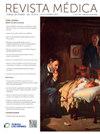Diabesidad: concepto e implicancias
IF 0.4
Q4 MEDICINE, GENERAL & INTERNAL
引用次数: 0
Abstract
The purpose of this review is to raise awareness and educate physicians about the concept, pathogenesis, and general aspects of diabesity treatment. The concept of diabesity is based on the twin epidemics of obesity and diabetes. Given a positive caloric balance, the inability of subcutaneous adipose tissue to expand leads to the deposition of visceral and ectopic fat, which favors lipotoxicity and inflammation, causing insulin resistance in the liver and muscle. At early stages, pancreatic beta cells compensate insulin resistance with hyperinsulinemia. However, lipotoxicity and inflammation trigger beta cell apoptosis, rendering them unable to compensate, resulting in hyperglycemia, first in the prediabetic range and later, full-blown diabetes. Furthermore, lipotoxicity and inflammation affect other organs and systems, such as the heart, circulatory system, and kidneys, which in turn are targets for the complications of diabetes, thus constituting a metabolic-cardio-renal syndrome. Weight loss through a healthy lifestyle, the eventual use of antidiabetic drugs that produce weight loss, and endoscopic or surgical interventional procedures, can reduce the morbidity and mortality associated with diabesity.
这篇综述的目的是提高认识和教育医生关于糖尿病的概念,发病机制和一般方面的治疗。糖尿病的概念是基于肥胖和糖尿病这对孪生流行病。在热量平衡为正的情况下,皮下脂肪组织无法扩张导致内脏脂肪和异位脂肪的沉积,这有利于脂肪毒性和炎症,导致肝脏和肌肉的胰岛素抵抗。在早期阶段,胰腺细胞用高胰岛素血症来补偿胰岛素抵抗。然而,脂肪毒性和炎症引发β细胞凋亡,使它们无法补偿,导致高血糖,首先在糖尿病前期范围内,然后是全面糖尿病。此外,脂肪毒性和炎症影响其他器官和系统,如心脏、循环系统和肾脏,而这些又成为糖尿病并发症的目标,从而构成代谢-心脏-肾脏综合征。通过健康的生活方式减肥,最终使用降糖药来减肥,以及内窥镜或外科介入手术,可以降低与糖尿病相关的发病率和死亡率。
本文章由计算机程序翻译,如有差异,请以英文原文为准。
求助全文
约1分钟内获得全文
求助全文
来源期刊

Revista Medica Clinica Las Condes
MEDICINE, GENERAL & INTERNAL-
CiteScore
0.80
自引率
0.00%
发文量
65
审稿时长
81 days
 求助内容:
求助内容: 应助结果提醒方式:
应助结果提醒方式:


